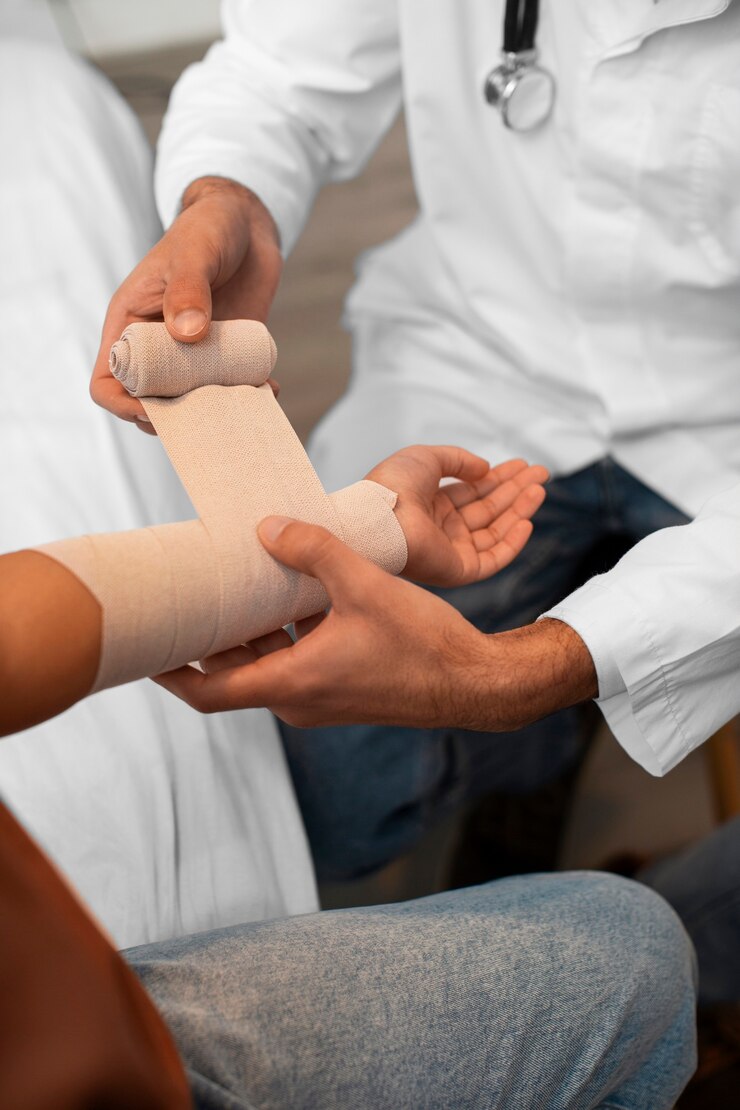Understanding Diabetic Wound Care in San Antonio: Why Specialized Treatment is Critical
Diabetic wounds, particularly foot ulcers, are one of the most common complications experienced by individuals living with diabetes. Without prompt and expert care, these wounds can worsen, leading to infections, tissue damage, and, in severe cases, amputation. Wound care in San Antonio offers specialized treatments to manage these wounds, prevent complications, and promote faster healing. Diabetic patients are at higher risk for developing chronic wounds due to poor circulation, nerve damage (neuropathy), and weakened immune systems, making expert intervention vital.
In this blog, we’ll dive into the unique challenges of treating diabetic wounds, the importance of early and specialized care, and the advanced treatments available to patients in San Antonio.
Why Diabetic Patients Are More Prone to Chronic Wounds
People with diabetes are at a greater risk of developing chronic wounds, particularly on their feet, due to several factors:
Peripheral Neuropathy
Diabetes can damage nerves, particularly in the extremities, which leads to a condition known as peripheral neuropathy. Patients with neuropathy often experience numbness in their feet, which can prevent them from feeling pain or noticing small injuries. These minor wounds can worsen over time without the patient being aware of them, leading to infections or ulcers.
Poor Circulation
Diabetes can also lead to poor blood circulation, particularly in the legs and feet. Reduced blood flow slows down the body’s ability to deliver oxygen and essential nutrients to the wound, making it more difficult for the wound to heal naturally.
Weakened Immune System
A weakened immune system is another factor that affects diabetic wound healing. Diabetes can impair the body’s ability to fight off infections, increasing the likelihood of a wound becoming infected.
For these reasons, it’s essential for diabetic patients to receive specialized wound care in San Antonio to ensure that wounds are treated promptly and effectively.
The Importance of Early Detection and Intervention in Diabetic Wound Care
One of the most critical aspects of diabetic wound care is early detection and intervention. The longer a wound goes untreated, the higher the risk of infection, gangrene, and amputation. In fact, diabetic foot ulcers are responsible for up to 85% of amputations among diabetic patients, but timely and proper wound care can prevent many of these cases.
Regular Foot Examinations
Patients with diabetes should regularly examine their feet for any signs of injury, redness, swelling, or blisters. If a wound is detected, immediate treatment is crucial. In San Antonio, wound care specialists are trained to identify the early signs of diabetic foot ulcers and provide expert treatment before complications develop.
Preventing Infection
Infection is one of the most significant risks associated with diabetic wounds. If an infection spreads, it can lead to severe tissue damage or even sepsis, a life-threatening condition. Diabetic wound care centers in San Antonio focus on preventing and treating infections by thoroughly cleaning wounds, removing dead tissue, and using antimicrobial dressings.
Advanced Diabetic Wound Care Treatments in San Antonio
Diabetic wound care centers in San Antonio offer advanced treatment options that are specifically designed to address the challenges of slow-healing diabetic wounds. Some of these innovative treatments include:
Hyperbaric Oxygen Therapy (HBOT)
Hyperbaric oxygen therapy is a powerful treatment option for diabetic wounds that are not healing properly. Patients are placed in a chamber where they breathe 100% oxygen, which increases the oxygen concentration in their blood. This promotes faster healing by stimulating new blood vessel growth, reducing swelling, and fighting infection.
Negative Pressure Wound Therapy (NPWT)
Also known as vacuum-assisted wound closure, negative pressure wound therapy involves placing a sealed dressing over the wound and using a vacuum pump to remove excess fluids. This therapy promotes increased blood flow to the wound and speeds up the healing process.
Debridement
Debridement is the process of removing dead or damaged tissue from a wound to promote healing. In cases where diabetic wounds contain necrotic (dead) tissue, debridement helps to clean the wound and prepare it for further treatment.
Bioengineered Skin Substitutes
For some diabetic foot ulcers, bioengineered skin substitutes may be used to cover the wound and promote new tissue growth. These substitutes mimic the structure of natural skin and provide a barrier against infection.
Antibiotic Therapy
When infection is present or likely to develop, antibiotics are often prescribed. Topical or systemic antibiotics can help prevent the spread of bacteria and reduce the risk of severe complications.
Offloading Techniques
Offloading refers to reducing pressure on the affected area, particularly in the case of foot ulcers. Patients may be provided with specialized footwear, braces, or crutches to prevent further damage to the wound and allow it to heal more effectively.
Preventing Diabetic Foot Ulcers: Best Practices
While expert diabetic wound care in San Antonio is critical for treating existing wounds, prevention is equally important. Patients can take steps to prevent diabetic foot ulcers and other wounds from developing in the first place:
Daily Foot Care
Inspect your feet daily for any signs of injury, blisters, or redness. If you notice any changes, contact a wound care specialist immediately.
Proper Footwear
Wearing well-fitted, comfortable shoes can reduce the risk of developing blisters or sores. Special diabetic shoes or insoles may also help distribute pressure evenly and protect your feet.
Blood Sugar Management
Maintaining good blood sugar control is one of the most effective ways to prevent diabetic complications, including foot ulcers. High blood glucose levels can impair circulation and delay healing.
Regular Checkups
Regular visits to a podiatrist or wound care specialist are essential for diabetic patients, especially those with a history of foot ulcers or neuropathy.
Why Choose Specialized Diabetic Wound Care in San Antonio?
The decision to seek specialized diabetic wound care in San Antonio can be the difference between recovery and complications. Wound care specialists are trained to manage the complexities of diabetic wounds and use the latest treatment methods to promote healing. Here’s why you should choose specialized care:
Expertise in Diabetic Complications
Wound care specialists have a deep understanding of how diabetes affects wound healing and what treatments are most effective for diabetic patients.
Advanced Treatment Options
Specialized wound care centers offer advanced treatments like HBOT, NPWT, and bioengineered skin substitutes, which are not available through general healthcare providers.
Faster Healing Times
With access to advanced therapies and a personalized approach, patients who receive expert care experience faster healing and are less likely to develop complications.
Prevention of Amputation
One of the primary goals of diabetic wound care is to prevent amputations. With timely treatment, many diabetic foot ulcers can be healed before they progress to the point of requiring amputation
FAQs
1. What is diabetic wound care?
Diabetic wound care focuses on treating wounds that develop as a result of complications from diabetes, such as poor circulation and nerve damage. Specialized care is essential to prevent infections, promote healing, and avoid complications like amputations.
2. What treatments are available for diabetic wounds?
Advanced treatments include hyperbaric oxygen therapy, negative pressure wound therapy, debridement, bioengineered skin substitutes, and antibiotic therapy. These treatments are designed to promote faster healing and prevent complications.
3. How can I prevent diabetic foot ulcers?
You can prevent diabetic foot ulcers by practicing daily foot care, wearing proper footwear, maintaining good blood sugar control, and regularly visiting a wound care specialist.
4. Why is early intervention important for diabetic wounds?
Early intervention is critical because it helps prevent infections, tissue damage, and more severe complications like amputation. The sooner a wound is treated, the better the outcome.
5. How does hyperbaric oxygen therapy help with diabetic wounds?
Hyperbaric oxygen therapy increases oxygen levels in the blood, promoting new blood vessel growth, reducing inflammation, and fighting infection, all of which speed up the healing process for diabetic wounds.














Post Comment